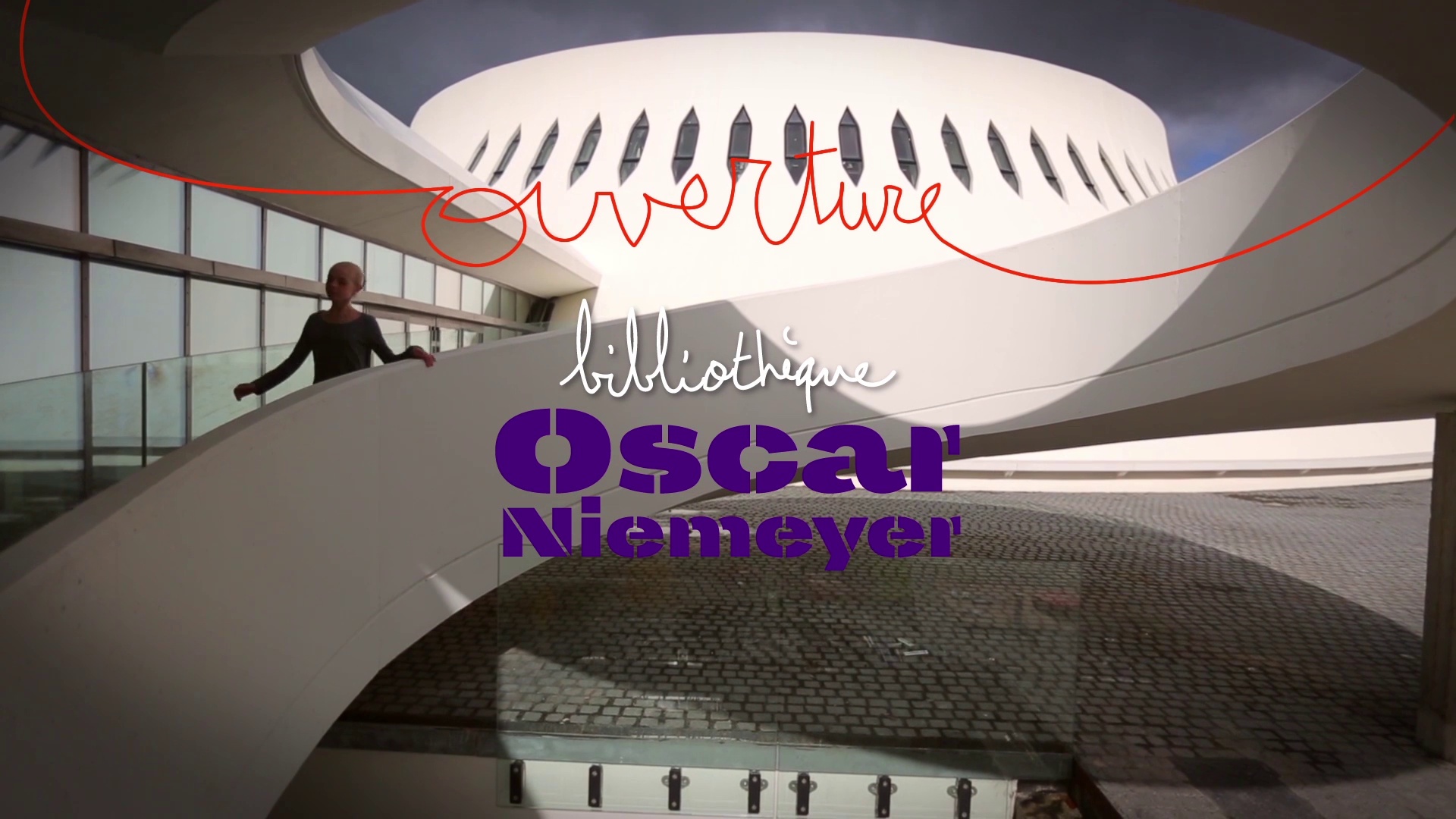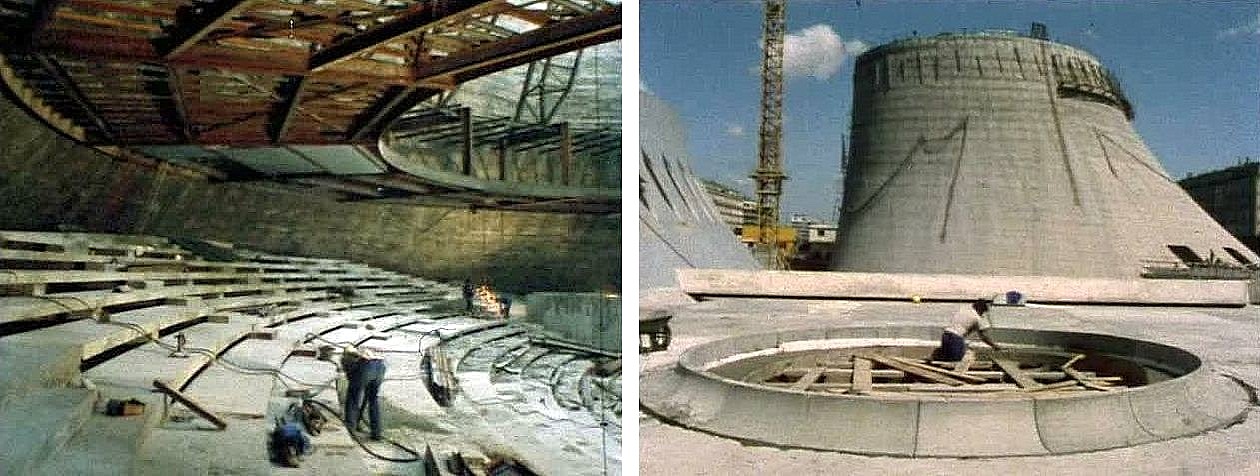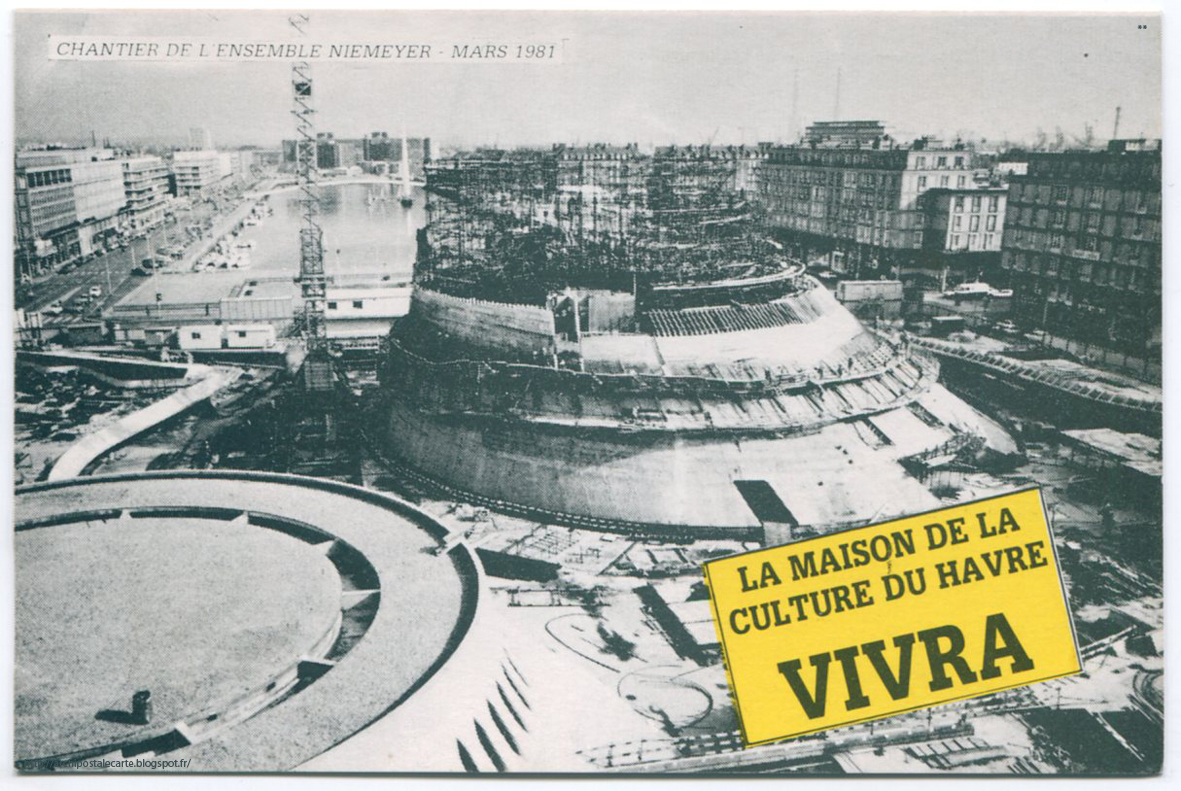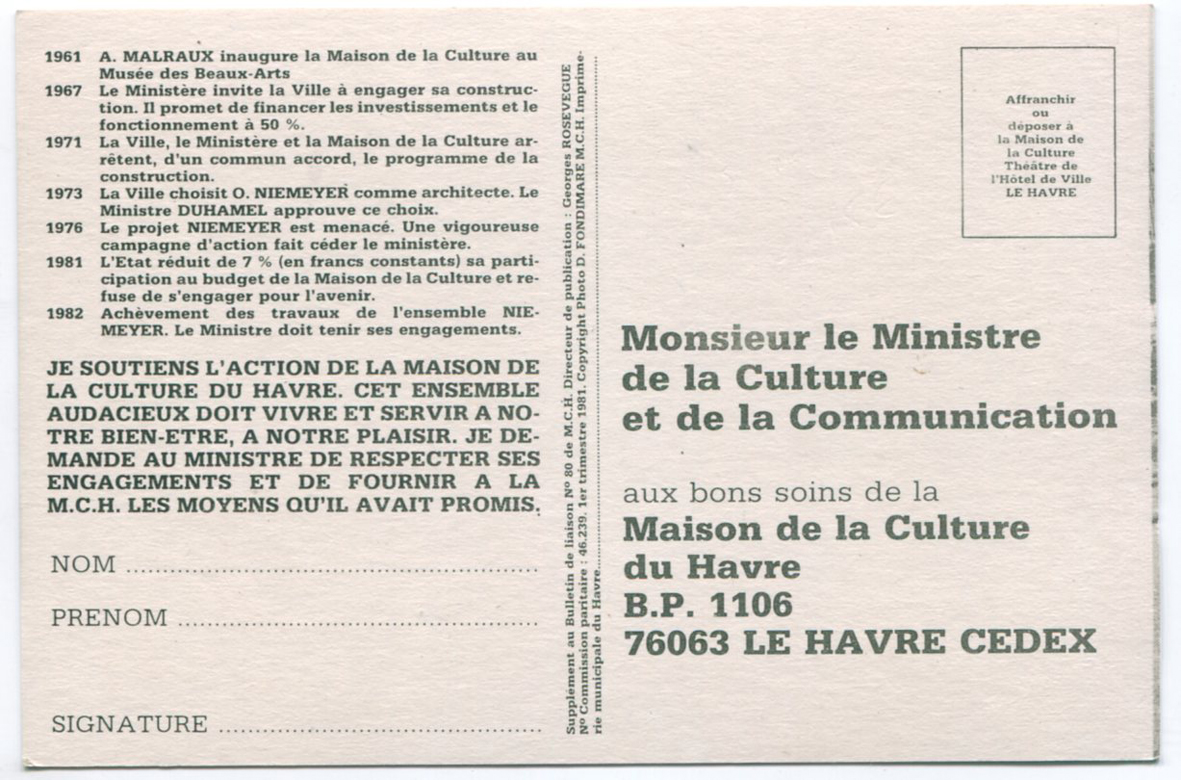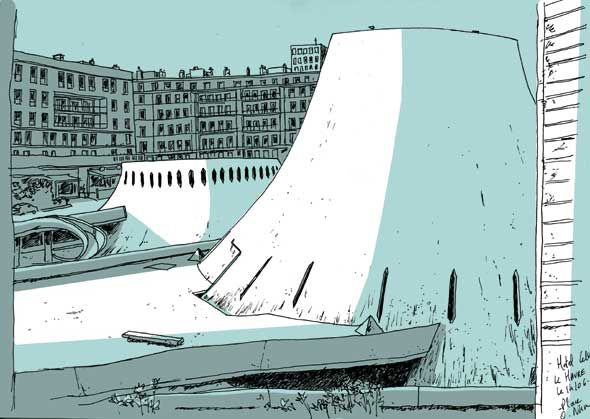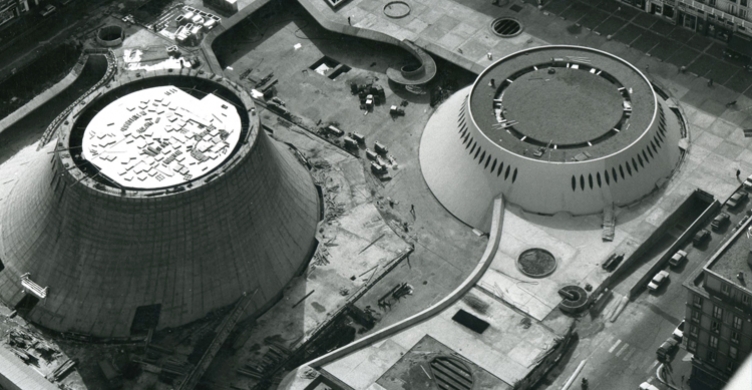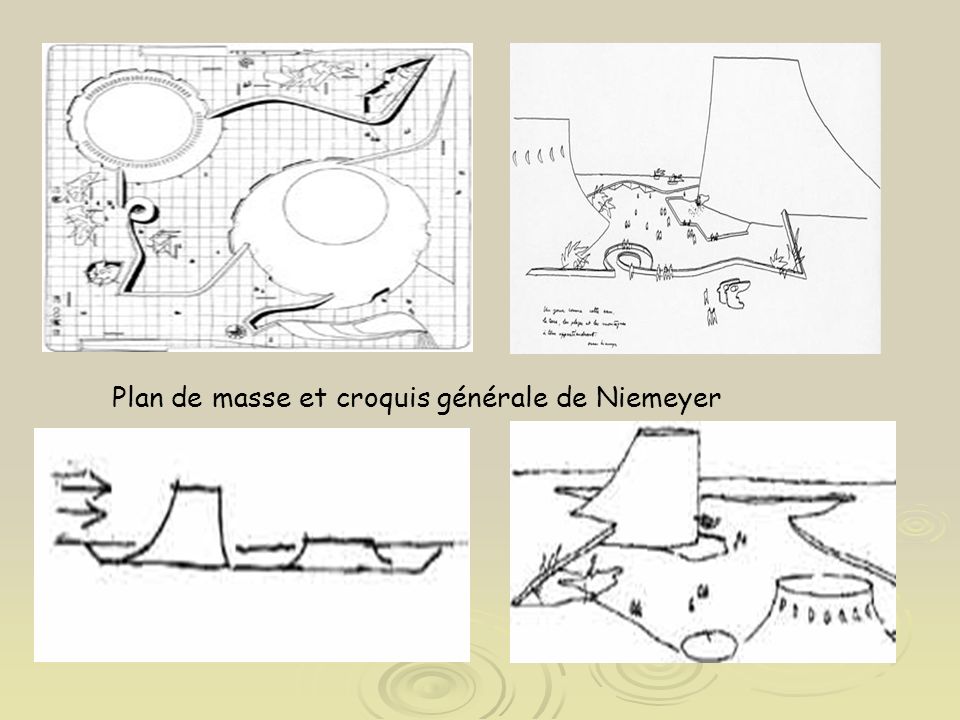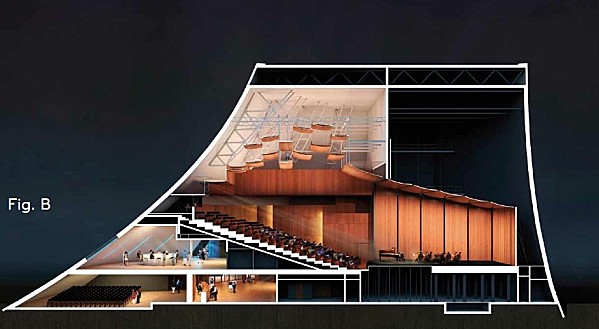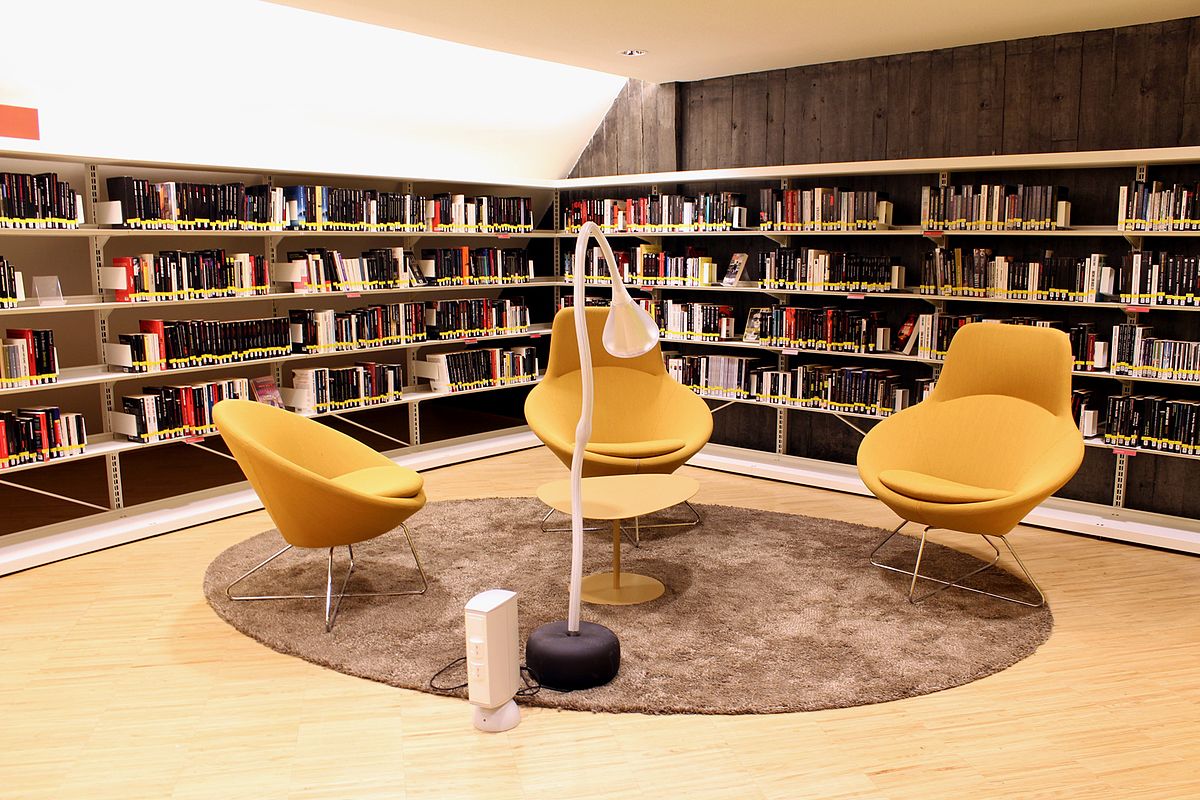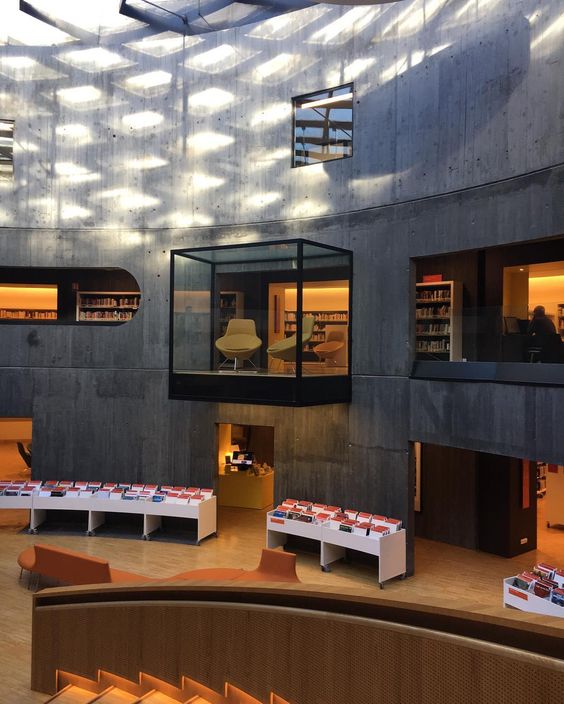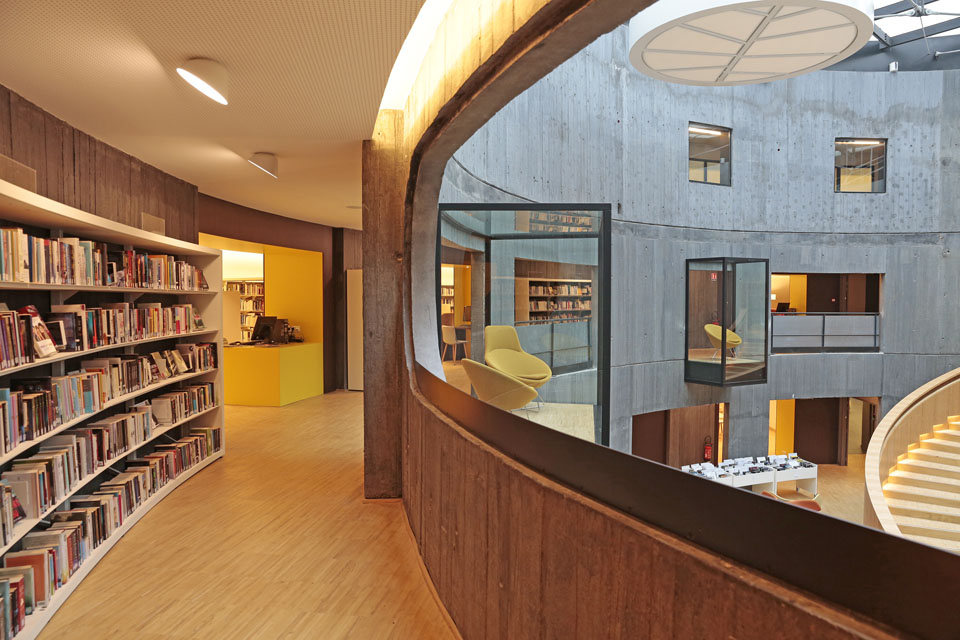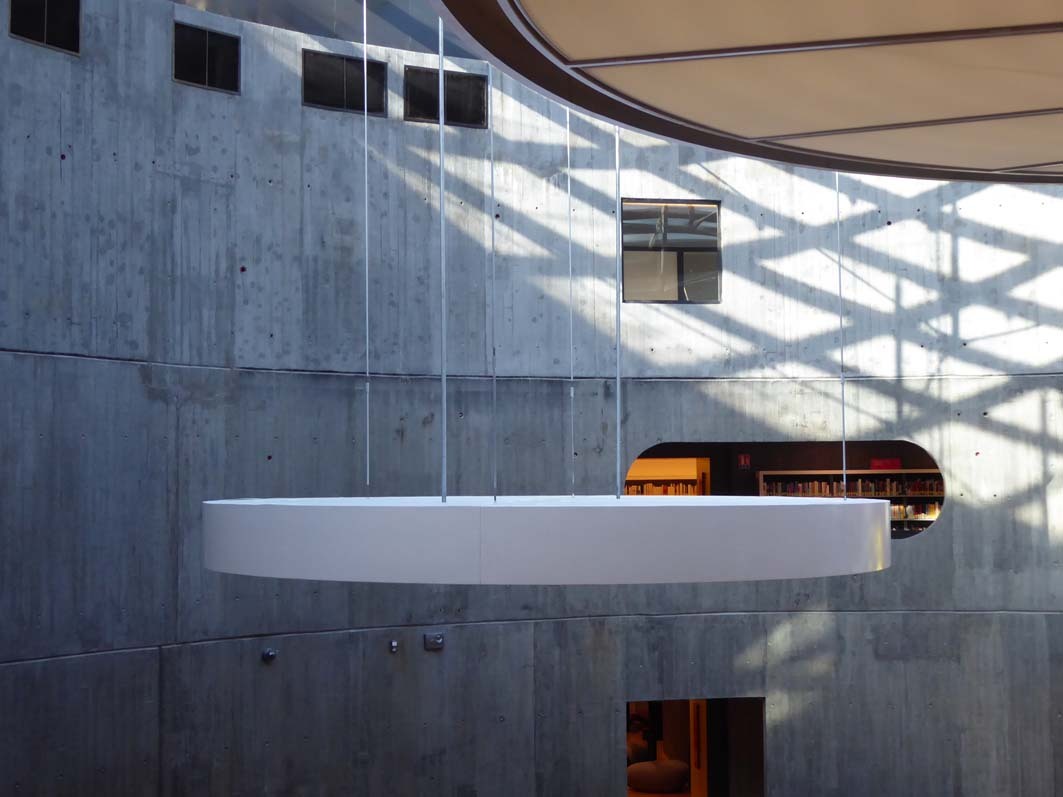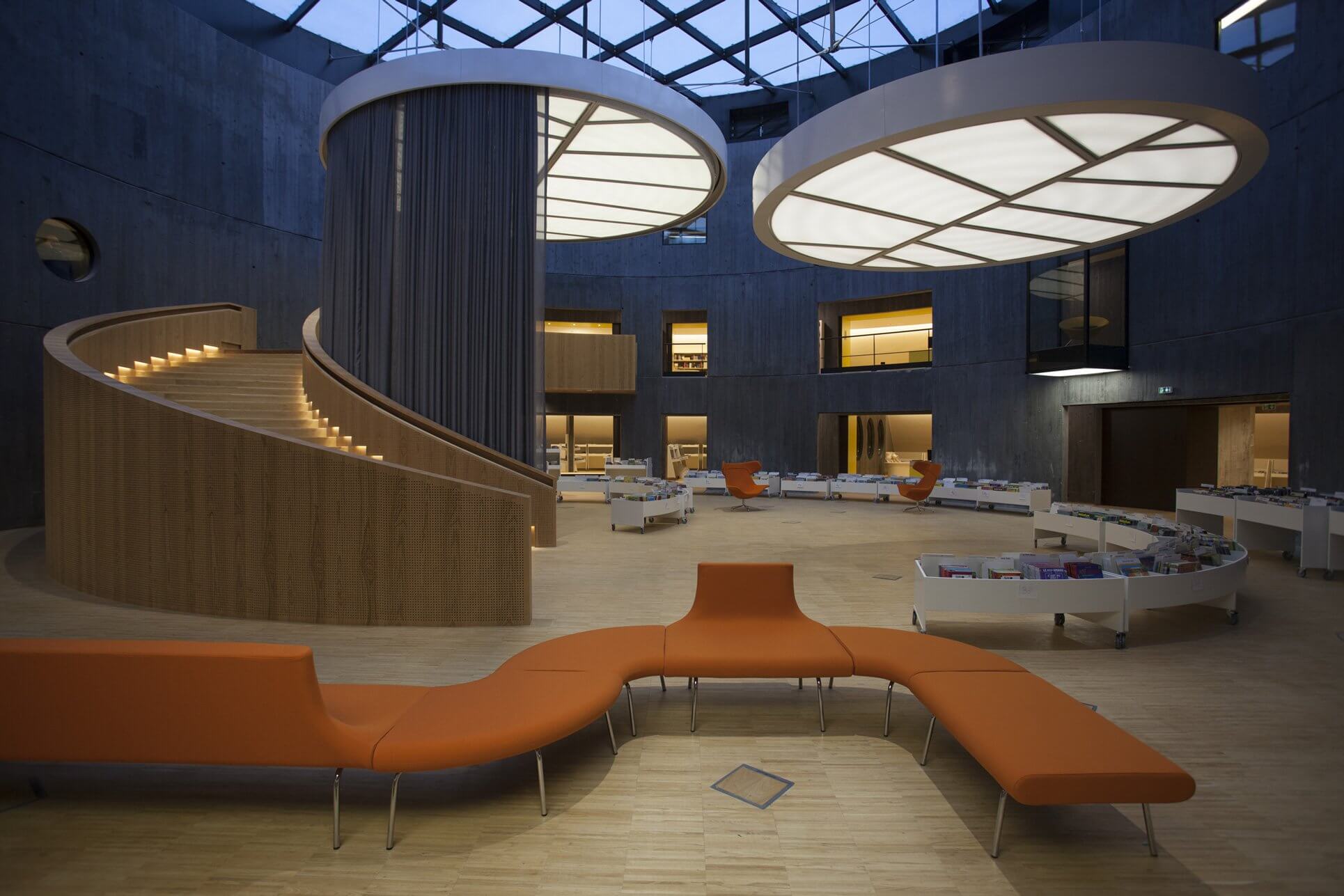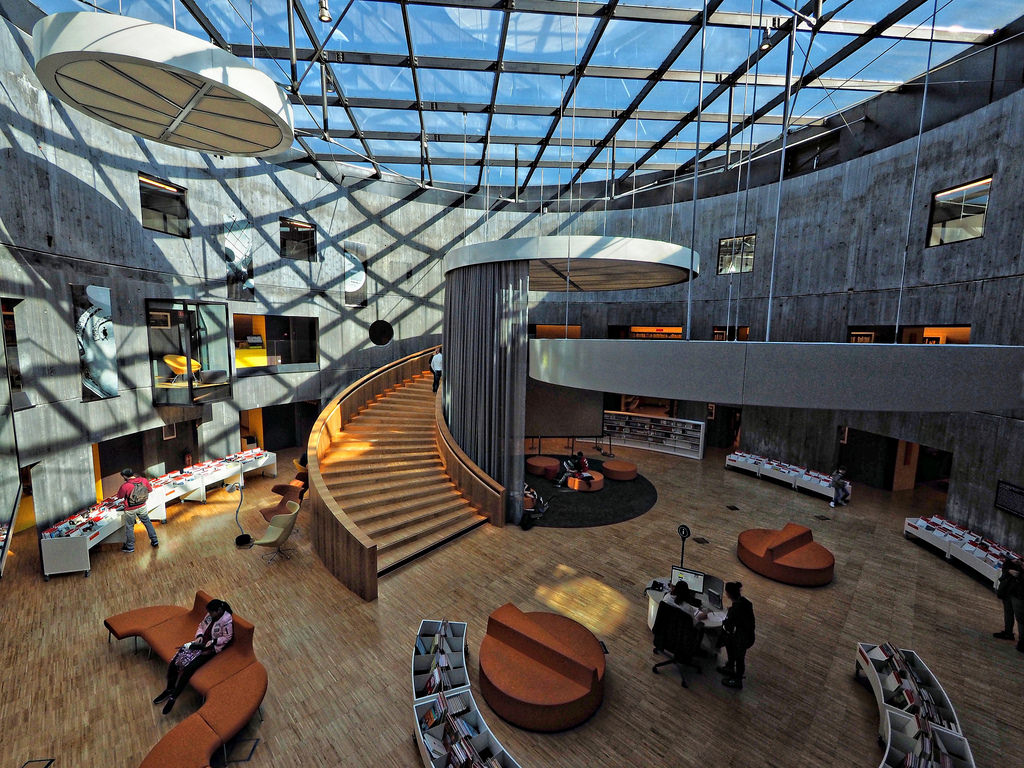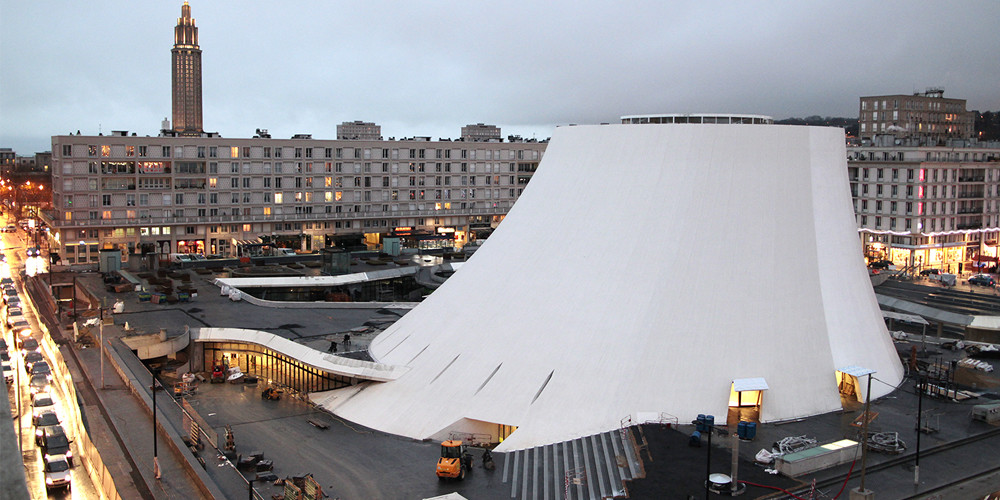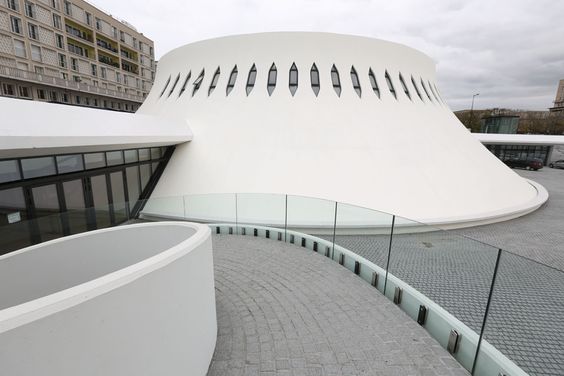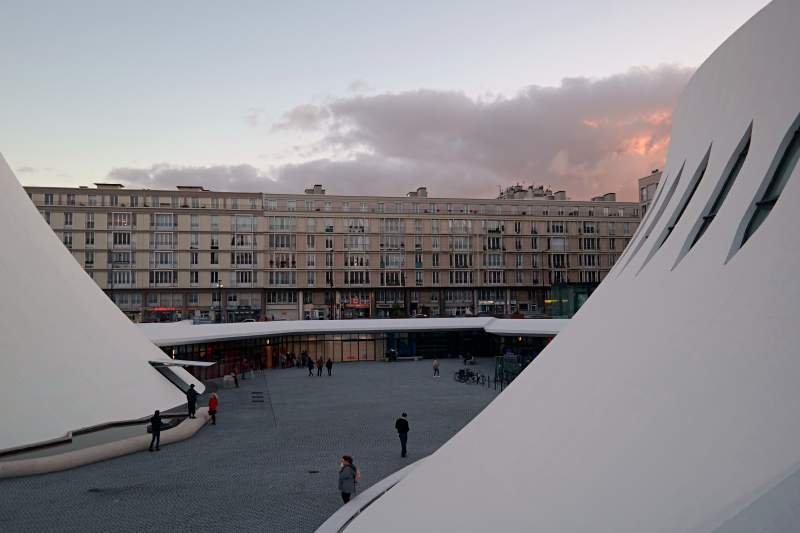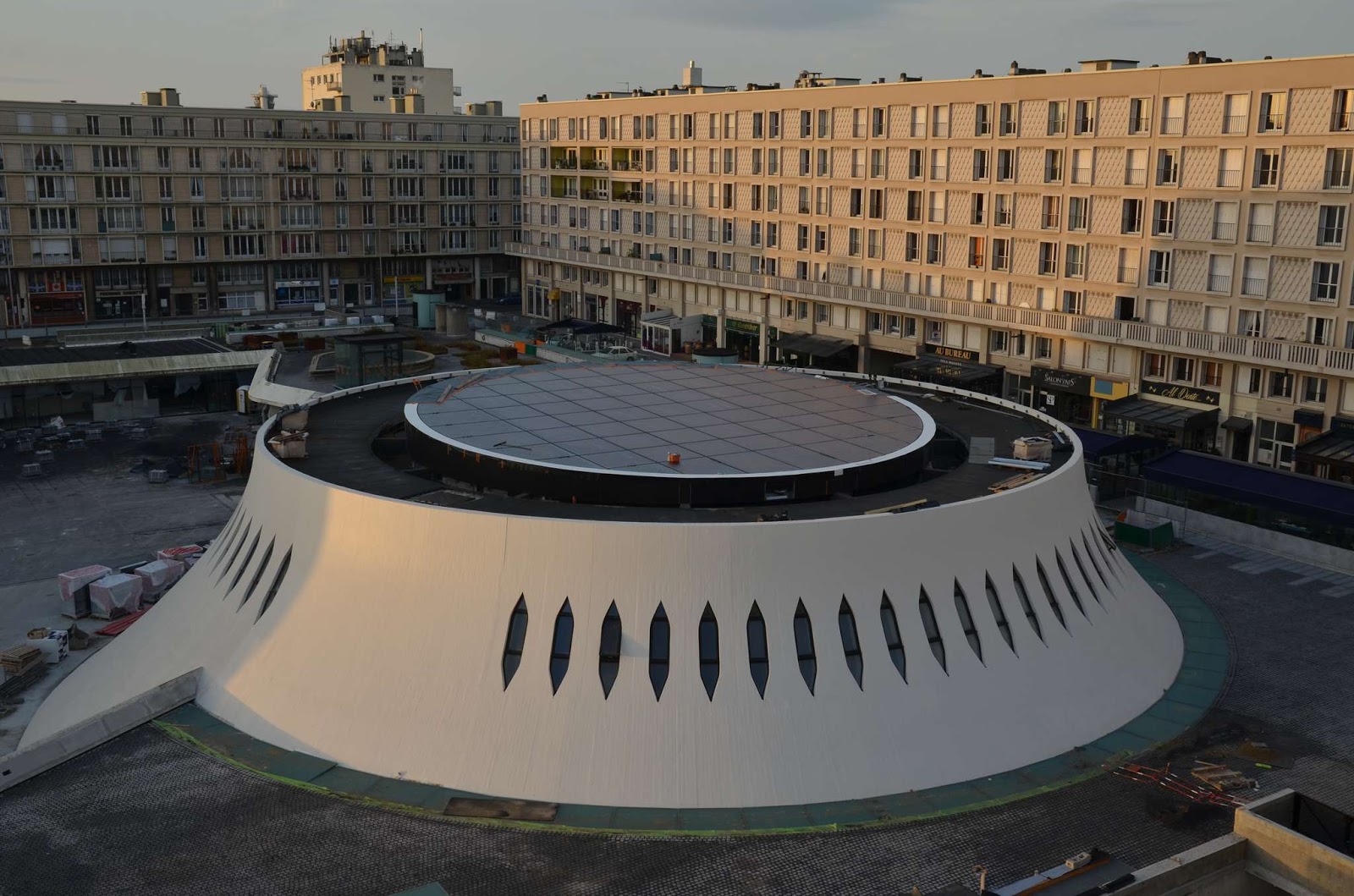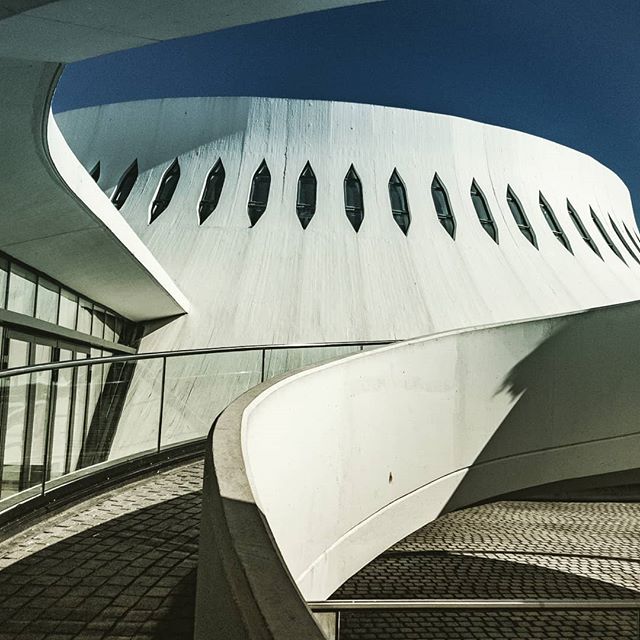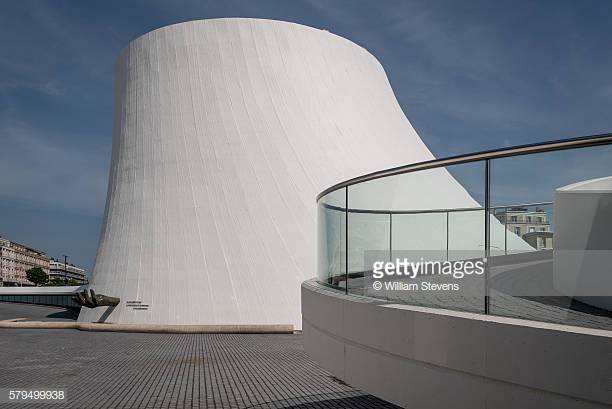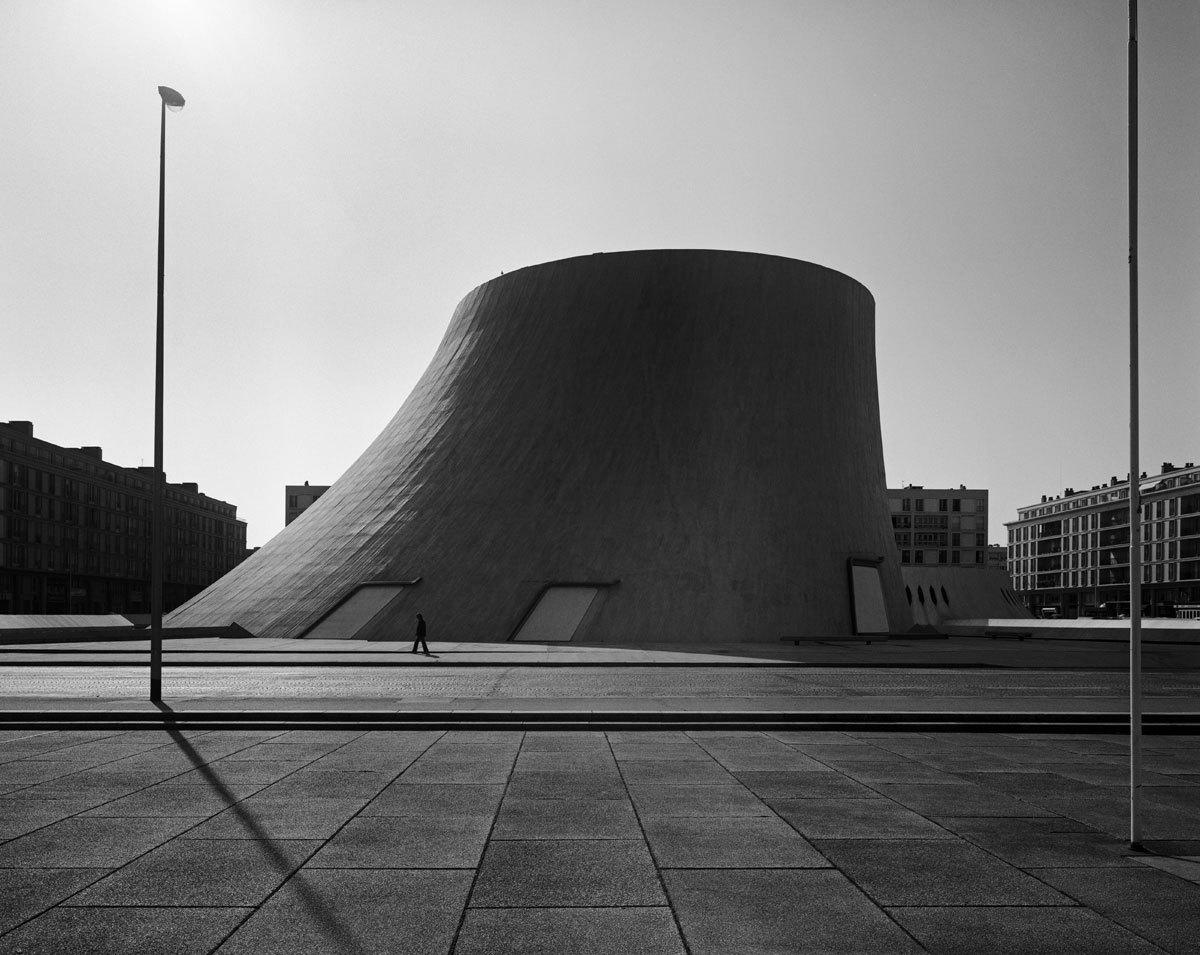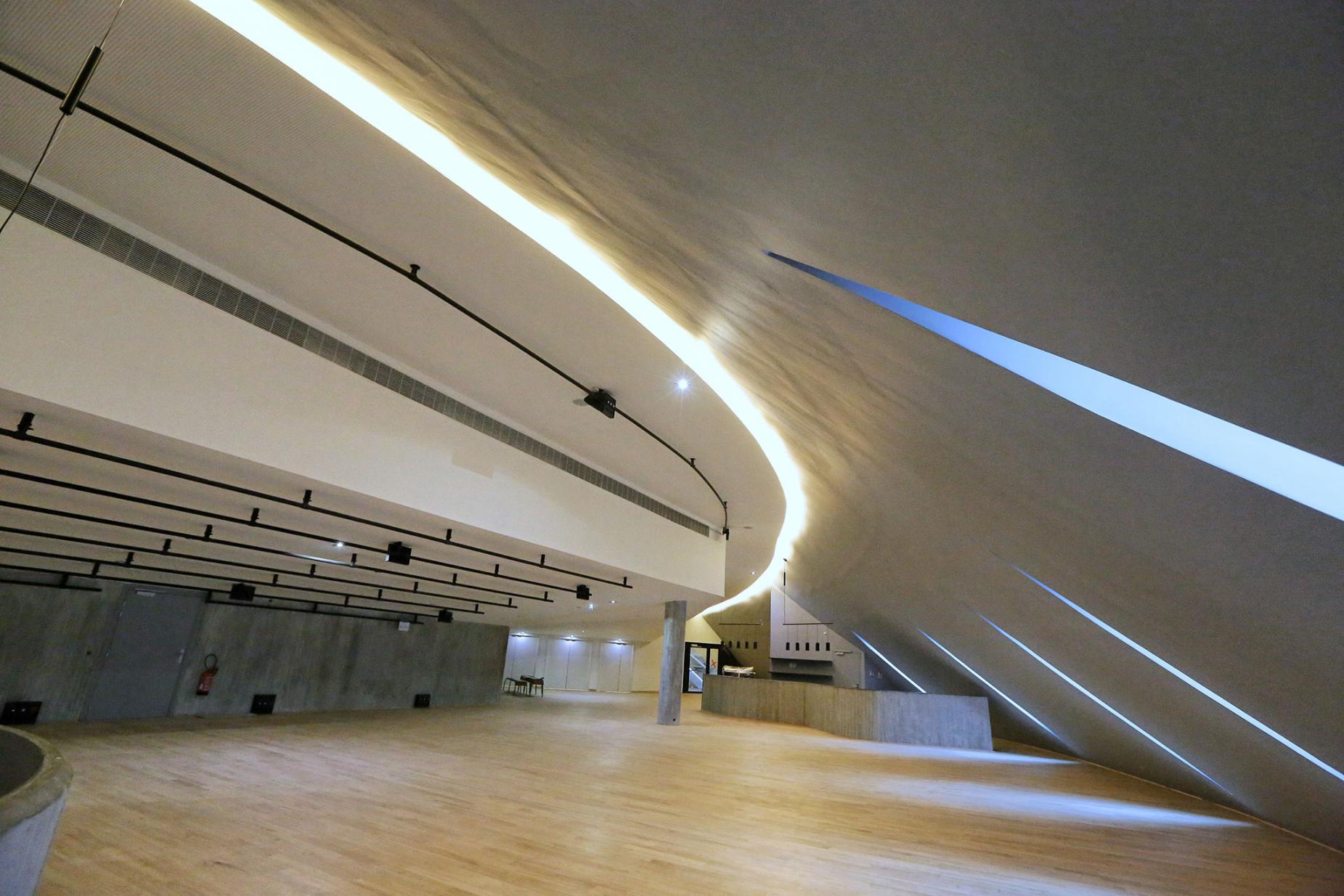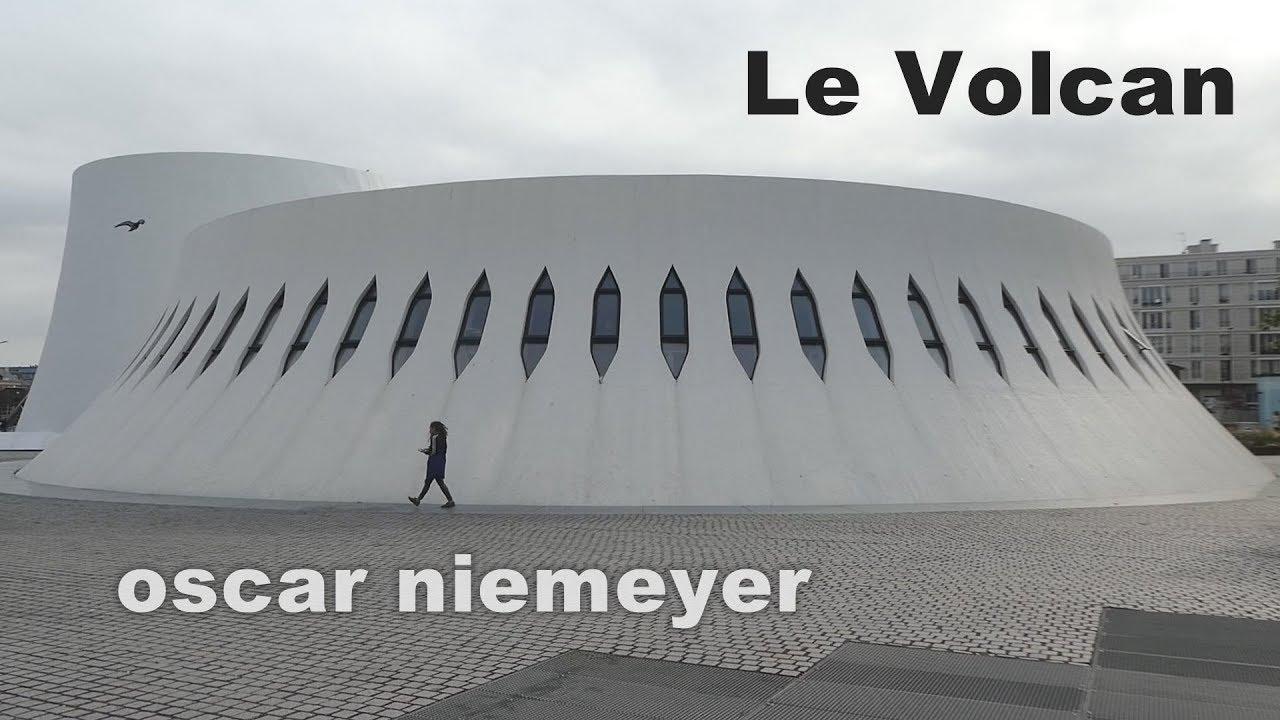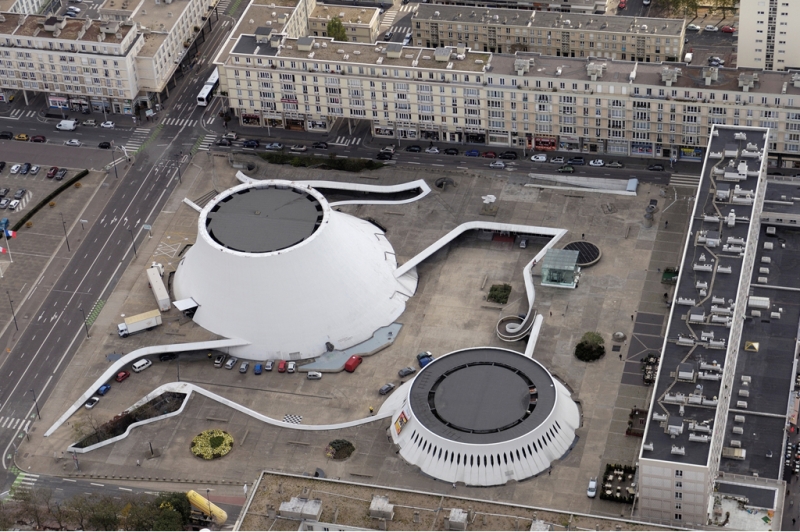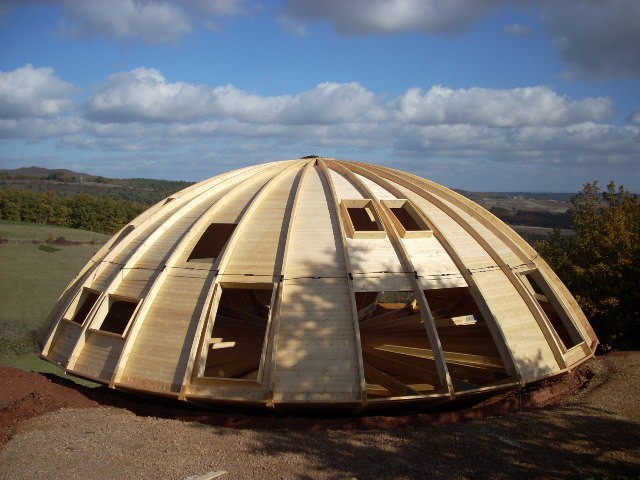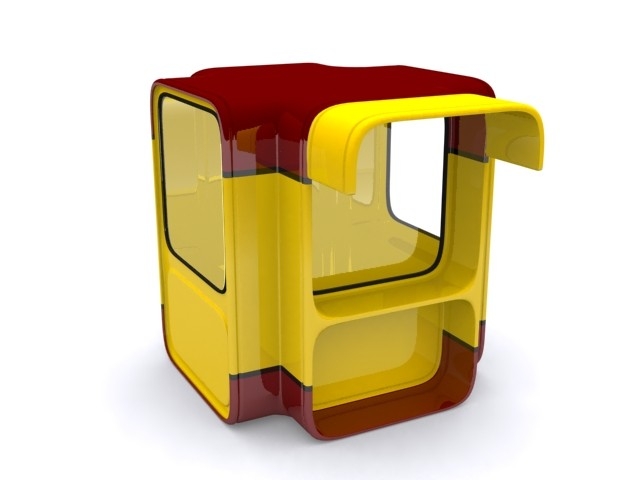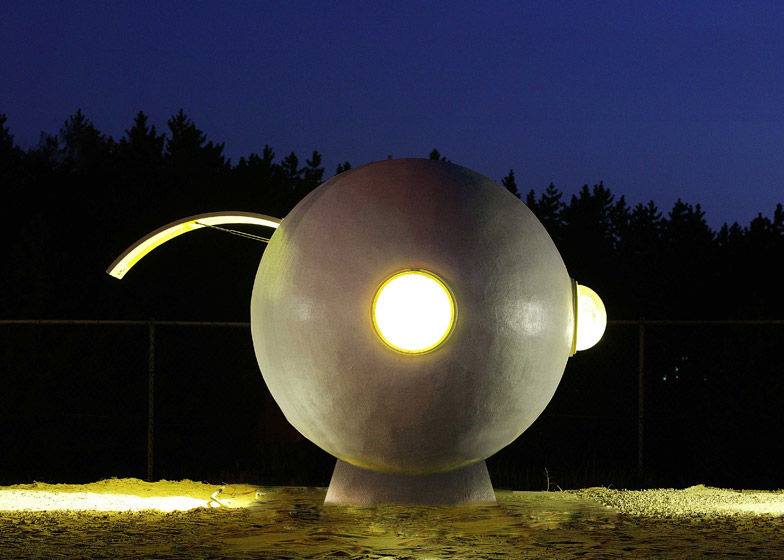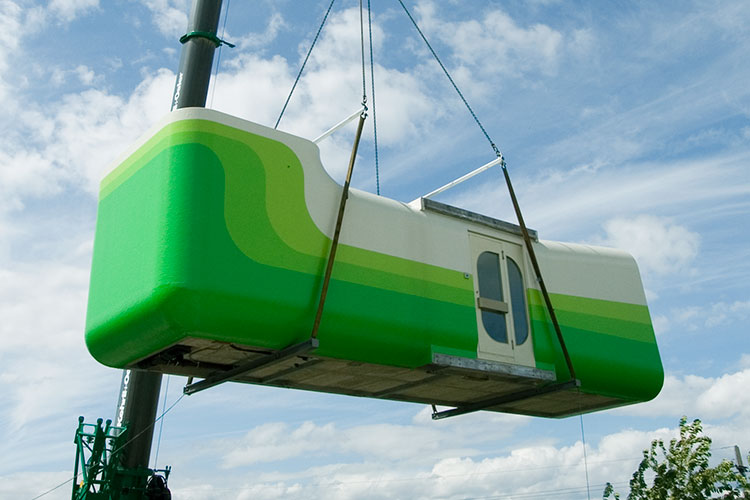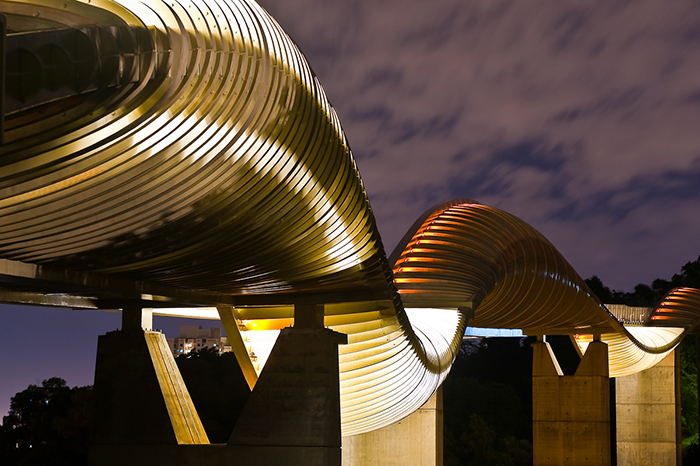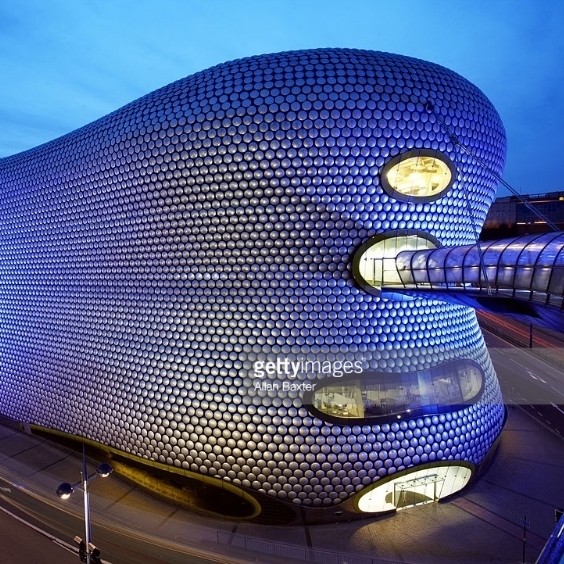Oscar Niemeyer (1907-2012) Volcano Le Havre France
Oscar (Ribeiro de Almeida de) Niemeyer (Soares) (1907-2012)
Architect and Designer BResilian Oscar Niemeyer
Disappeared at 104 years, the most famous of the South American architects had designed, in 1972, the harmonious contours of the Havre Volcano. An original and typical cultural center of master Oscar Niemeyer, concrete follower.
 Oscar Niemeyer “Volcan” drawings, sketch.
Oscar Niemeyer “Volcan” drawings, sketch.
He is one of the most famous Brazilian architects. His work, which fits closely into the international style movement, holds a major place in the history of modern architecture. He is best known for building Brasilia in Brazil with urban planner Lucio Costa, inaugurated in 1960. Exiled to Europe in the middle of the years 1960, in particular he built the headquarters of the French Communist Party, the former headquarters of the newspaper L’Humanité, the Bobigny Labor Exchange [archive] and the Havre Culture House. He received the Pritzker Prize in 1988 and was made Commander of the Legion of Honor 12 December 2007, three days before his hundredth birthday.
After its destruction at the end of the Second World War, the Ministry of Reconstruction and Town Planning has entrusted the reconstruction of the city of Le Havre to the architect Auguste Perret.
Havre, Oscar Niemeyer at Futur Anterior :
We’re going to look at a postcard that, for me, by its function and its image, acts as a total form. First it’s a very rare postcard from a construction site, thematic little addressed by postcard publishers and which therefore demonstrates a shift in function of this postcard. Ensuite, comes the architect and the place : Oscar Niemeyer and the House of Culture of Le Havre. That could have been enough to satisfy us. But then comes the function of this postcard because its slogan on its image immediately says its role : an activist card.
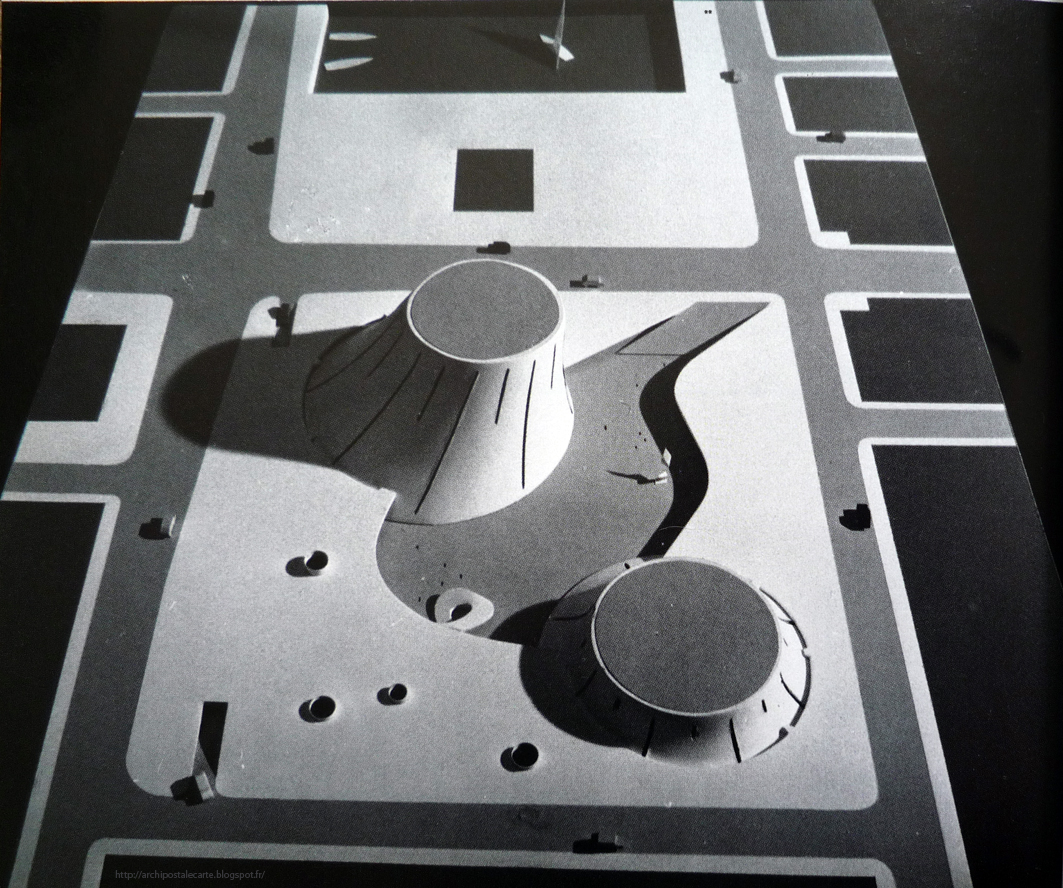
On the photograph of the model published in 1972..
The architect wanted to recreate a strong cultural and commercial area around Place Gambetta, once a place of intellectual and artistic life in the city.
The cultural site of the Volcano, entrusted to the famous Brazilian architect Oscar Niemeyer, is the result of a four-year project (1978 -1982).
The establishment is created and inaugurated on 18 November 1982. The first Maison de la Culture de France, first located at the André Malraux museum and then at the Hôtel de Ville Theater, was transferred there. Its size (about 11 000 m2) and its location, in continuity of the trade basin, make this set an emblematic place, visible and participating in one of the major perspectives of the city of Le Havre.
In 1990, The Maison de la Culture is renowned “The volcano” on the decision of the new director, Alain Milianti. One year later, The Volcano is labeled national scene by the Ministry of Culture. Listed as UNESCO World Heritage since 2005. It opened its doors on 3 November 2015.
A new spacious and comfortable library has taken place in the small Volcano, in the heart of the Oscar Niemeyer Space which also hosts the National Stage. This new equipment, attractive and visible urban marker, installed in an emblematic building enables the development of books, press, DVD, CDs and other documents and to offer services that could not find their place at the Armand Salacrou library. The new library works in tandem with the Armand Salacrou library, which becomes a space dedicated to the local fund and the promotion of heritage documents (on-site consultation and exhibition). In an area of 5000m², it allows exchange and conviviality, the comfortable stay, the break in the day, work in peace, reading but also debates, group discussion, cultural activity, Training. Spaces, lights, very diverse furniture, from the pebble work table to lie down, are thus proposed.
 |
 |
The Great Volcano :
The main objective of restructuring the Grand Volcano, made available to the National Scene, is the rehabilitation of the stage-hall space. The scenographic equipment of the Grand Volcan has never changed since its installation. All of this stage and acoustic equipment will therefore be fully upgraded ; on the one hand they will be safer for artists and visitors, and will also adapt to new musical and scenographic programming.
However, the entire volume of the Grand Volcan is affected by the restructuring necessary to bring fire safety and accessibility standards into line, providing a warm atmosphere highly demanded by users, and the need for natural light. Real reinforced concrete shell pierced with small portholes, the Great Volcano suffers from a lack of natural light, presenting users with an unhealthy appearance. The rehabilitation of the whole thus emphasizes the play of light and the choice of materials. Wood is in the spotlight: fabric and wood seats, parquets, curved wooden walls for the room, new wooden reception desks. The warm atmosphere thus provided is complemented by colorful notes (colorful drapes and partitions) and lighting highlighting the concrete plank walls.
Another notable change in the Great Volcano :
The home will be radically transformed. It will become more accessible and allow events such as after-show meetings, or concert cafes. This rapprochement between artists and visitors is also marked by the displacement of the artists' entrance near those of the spectators. The small room (ex-cinema) is also renovated and will be reserved for small forms of shows, especially for children, and at conferences.
The library :
It works in tandem with the Armand Salacrou central library, located a few minutes walk. The Salacrou site, whose arrangements will be made later, will house a toy library, Heritage Poles, network management and centralized document processing.
Oscar Niemeyer's library offers a general documentary offer, Self-study and quiet work spaces. Architectural modifications : the glass facade overlooking the lower square is advanced.
For more natural light, a central atrium is created by installing a glass roof. Inside, a real scenographic route is set up. Original and innovative, it counterbalances the scale of the building, a priori unsuitable for individual spaces, with atmospheres differentiated by lighting, the furniture, textures and choice of materials.
The warm atmosphere of the Grand Volcan will be found at the entrance to the media library, which offers a café and press room, directly visible from the outside thanks to the glass facade. Intuitive and readable by a light treatment on the ceiling, the route is then ascending and punctuated by balconies, boxes and alcoves like little reading rooms.
Common areas :
The entry of the two major cultural facilities is through a common covered square on which also gives a bar-brasserie. A place of permanent conviviality, open to all Le Havres, is thus created. The covered space will be treated as a continuation of the outdoor spaces, the goal being to encourage people to enter and cross.
The white walls of the Volcano are adorned with an atypical video at dusk. Broadcast through eleven 200,000 lumen projectors (HD), 23 m high and 160 m in circumference, the work required ten days of installation. "It's a big challenge on the fact that it's long and especially not cylindrical. We spent several nights correcting the parallaxes ", explains Philippe Lacroix, technical director of the Volcano. L & rsquo; work, it's ORT , an in situ creation by Kurt Hentschläger. the National Scene of Le Havre is transformed into a projection surface for a multimedia creation at 360 degrees. To close the festivities of 500 years of Le Havre, the Volcano turns into a big screen and presents, up & rsquo; to 28 October 2017.
multimedia installation of Kurt Hentschläger :
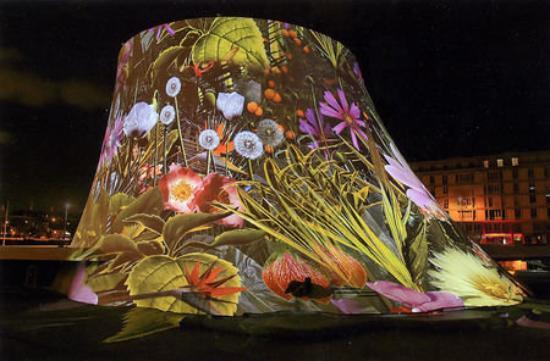

BIOGRAPHY Kurt Hentschläger


